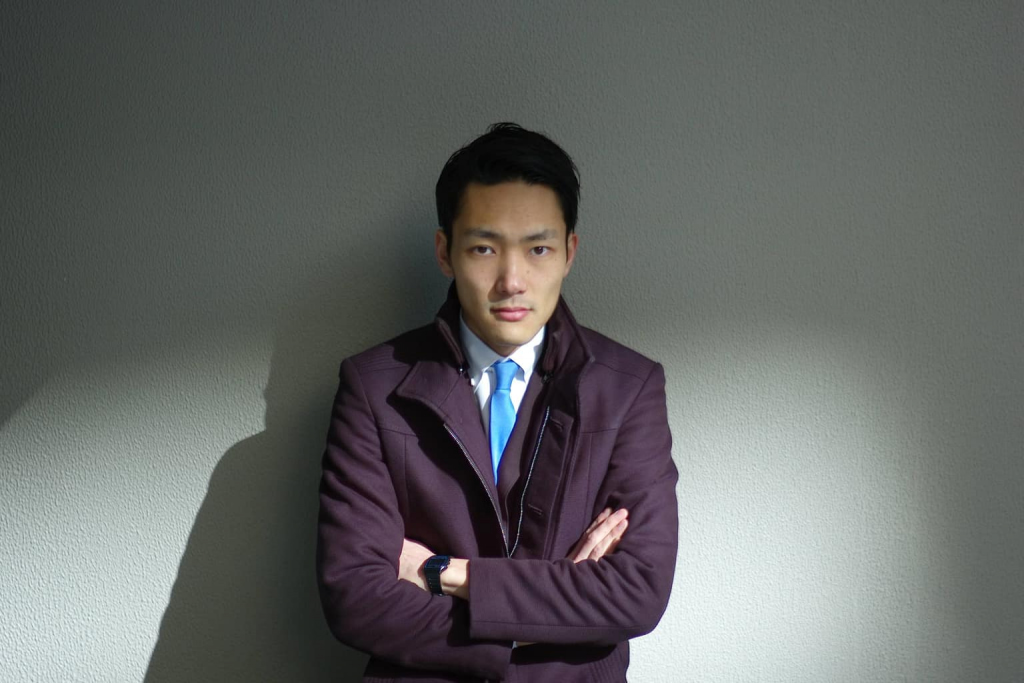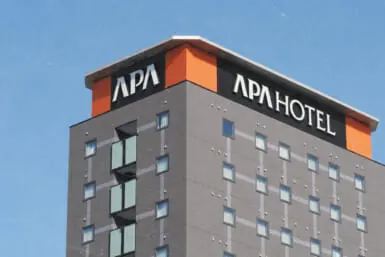“That was like super hell,” says Naoya Inose. “I don’t even remember the past three days.”
Inose’s travels from his London art studio to Ginza where his current exhibition is underway are reflective of his nomadic life. Born in Tokyo, his cinematographer father moved the family around before settling in Kanagawa. Inose spent time in America and the UK, and his exhibitions have taken him to Seoul, Hong Kong, Abu Dhabi, and the Mediterranean island of Malta.
A black suitcase sits next to the 30-year-old oil painter, his wire-thin frame shrouded in a black overcoat, his angular, goateed jawline reminiscent of a manga antihero. The day before the reception for his first solo exhibition, titled Blue, Inose sips on a can of the energy drink Dekavita C in a meeting room of THE CLUB, the sixth-floor art gallery at the upscale Ginza Six department store.
“I don’t really know where I come from, and that is a really tough question for me,” says Inose, whose maternal grandfather is half-Spanish, half-Indian. “I don’t really know my nationality, to be honest.”
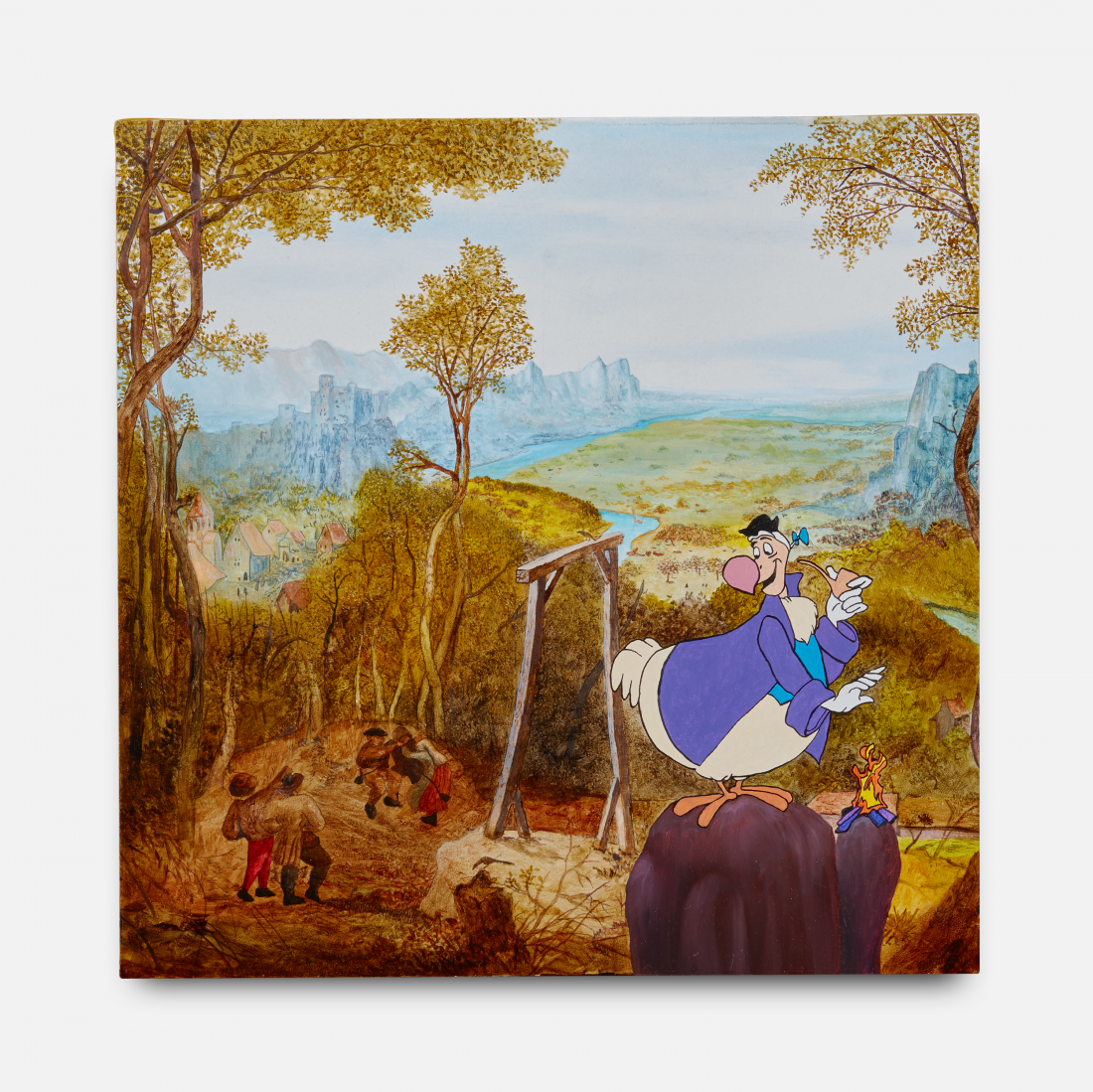
Naoya Inose, Caucus race, 2018 © Courtesy of the artist
The Force is Strong
A graduate of Tokyo National University of Fine Arts and Music and the master of arts program at UAL Chelsea College of Art and Design, Inose participated in last year’s Domani exhibition, a showcase of Japan’s top burgeoning artists. He has already exhibited his works at The National Art Center Tokyo and The Pratt Institute in Brooklyn.
His fantastical landscapes and abstract paintings are imbued with bold colors and exacting detail, and often depict contrasting imagery of vibrant nature juxtaposed with urban blight and dilapidation. While his technical training was influenced by British Romantic landscape painters such as J.M.W. Turner and John Constable, and the color composition paintings of Mark Rothko and Barnett Newman, Inose says it all started with Star Wars.
As a youth, Inose poured over his father’s vast collection of sci-fi movies and design books. Young Inose was astounded to learn the Star Wars set backdrops were matte oil paintings. He was also mesmerized by the works of H.R. Giger, the Swiss painter responsible for the design of Ridley Scott’s original alien.
“Sci-fi movies were influenced by Romantic landscape paintings. George Lucas loves these types of American Romantic paintings,” says Inose. “I was traveling by myself in New York when I was 18 years old. I went to the Metropolitan [Museum of Art] and I saw the Hudson River school paintings and Romantic paintings and that was super shocking because every detail was precise, and I was like, damn, is that by a human?”
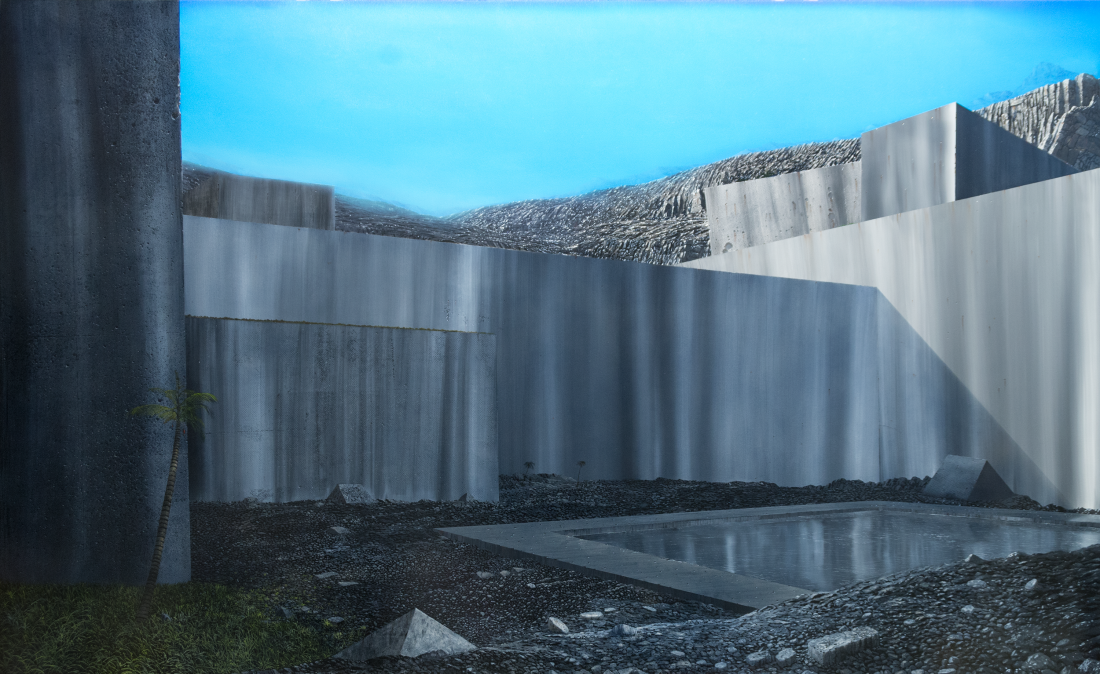
Naoya Inose, Polylith into the blue, 2018 © Courtesy of the artist
Tangled Up In Blue
Inose says he was always enraptured by the color blue. Blue represents sadness. It is used in hospitals because blue evokes a healing environment, and helps refresh surgeon’s vision in the operating room. As Inose prepared his portfolio to submit to art school, he struggled to pay for the large quantity of blue paint his work required.
During university, Inose applied the same meticulous training and skill that helped him reign as video game champ among his friends to his paintings. An up-close look at his latest work, “Polylith into the blue,” reveals exact placement of every rock and each blade of grass. His attention to minute details is revealed in the pockmarks and streaks of rust on the cement walls.
“People think I use airbrush, but it’s basic, simple oil painting,” says Inose. “I just use brushes, the same as the old masters. Except I use Japanese brushes because they are precise, and good quality. I use Japanese brushes but European materials. It works well.”
Inose’s work reveals poignant honesty and intimacy rarely displayed by Japanese landscape painters, whose imagery tends to focus on decorative naturalism. Inose says each painting is a page out of his diary. While he struggles to express himself verbally, he says through art he can expose the environmental and social issues that concern him, as well as depression – his own depression and the feeling of melancholy he senses from his contemporaries.
“In Japan, we are always right next to these types of catastrophic situations, like tsunamis, earthquakes, Fukushima. There is always death, and life,” says Inose. “I am always like that, a bit depressed, really. I don’t know the reason. I think my generation, we have something like a depressed era. Everything is fine. We have enough supply. We are perfectly well, but there is something lacking. What is lacking? I don’t know. That’s just depression.”
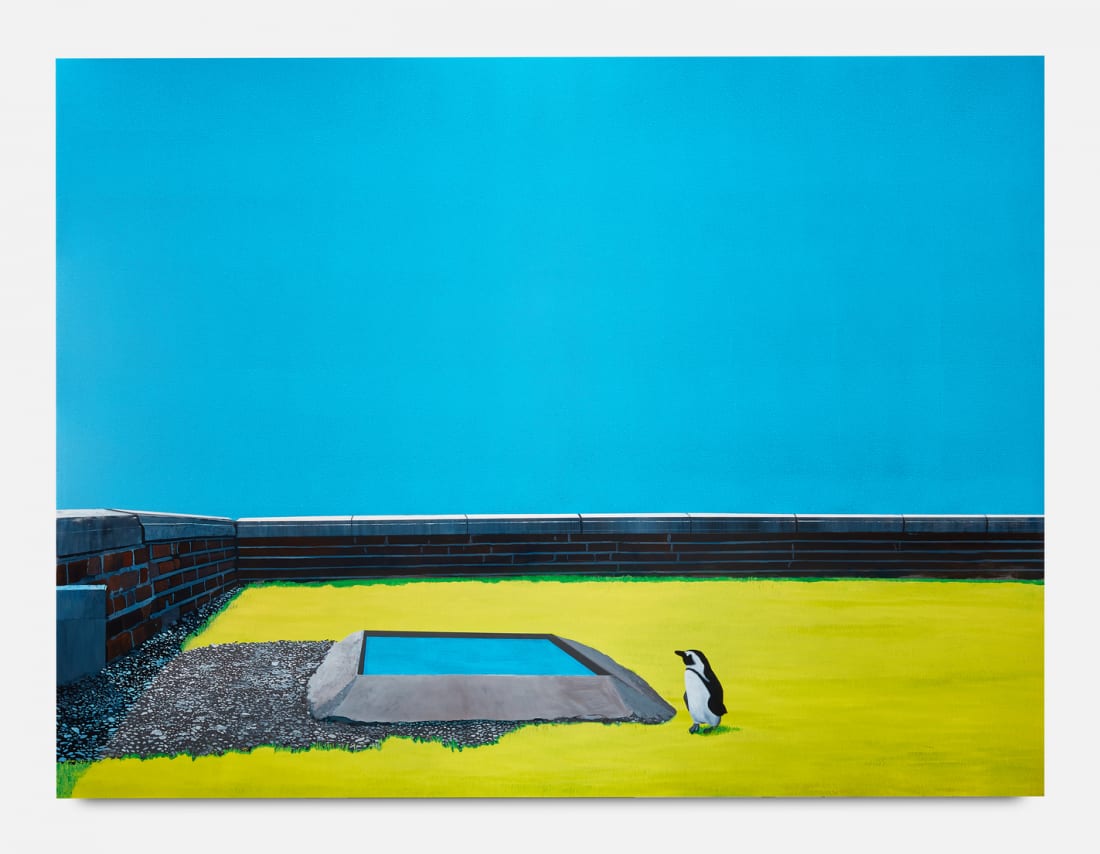
Naoya Inose, Almost home2, 2018 © Courtesy of the artist
Neither Fish Nor Fowl
After the 2011 Tohoku earthquake and tsunami Inose started painting a series of swimming pools, oftentimes joined by a sentient penguin. While the images and color combinations are reminiscent of David Hockney’s work, Inose says he was not inspired by the British painter, but instead a documentary he watched about penguins at the South Pole.
“They say penguins are clever, but they have a weakness. They can’t fly. That is like me. That is like the Japanese people,” says Inose. “When I went to language school when I moved to the UK, the Japanese students knew English grammar perfectly, which European people really couldn’t do well in the classroom. But Japanese people can’t speak English. They say, Japanese people are very educated, but yeah, why can’t we fly? The swimming pool is a metaphor for Japan. It is really clean, but as long as [people] stay beside the swimming pool, they can feed, and there are not really any problems.”
While Inose’s paintings aren’t selling for $90 million, like Hockney’s recent record sale of his oil painting “Portrait of an Artist (Pool with Two Figures),” Inose can now afford plentiful amounts of blue paint, including his two favorite pigments – cobalt blue and aquamarine, a ground semi-precious stone preferred by the Renaissance painters.
“Some of my collectors asked, ‘why do you use the blue,’” says Inose. “Blue makes me, maybe, very calm. I need to feel calm.”
Naoya Inose’s exhibition ‘Blue’ is now closed.
Update July 2021: Naoya Inose’s current exhibtion ‘Vacation on the Blue’ is displayed at THE CLUB until August 27.
Feature image: © Naoya Inose

